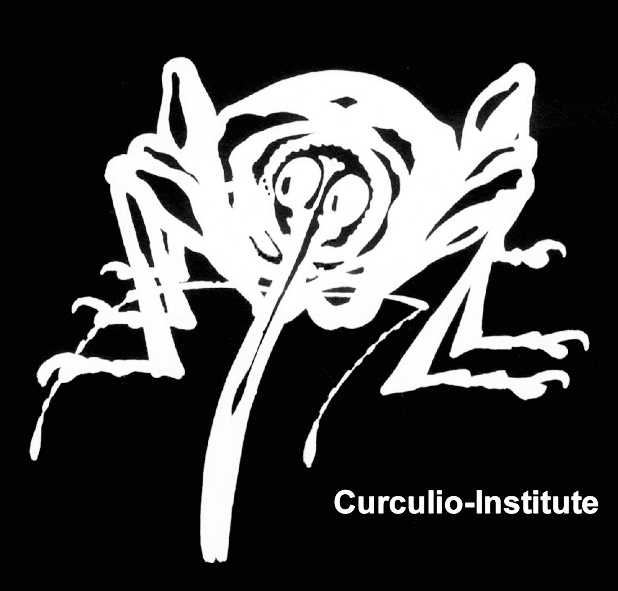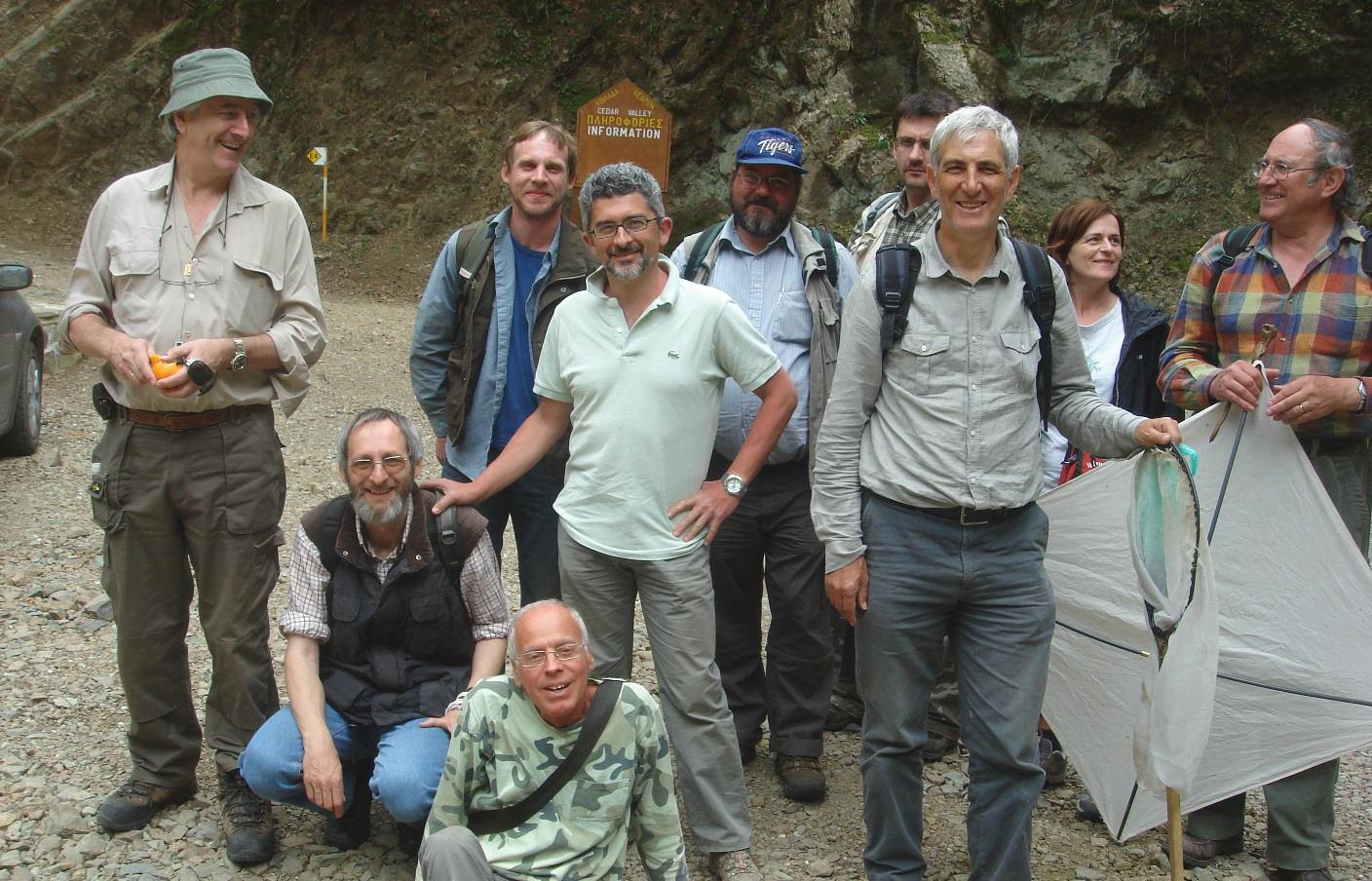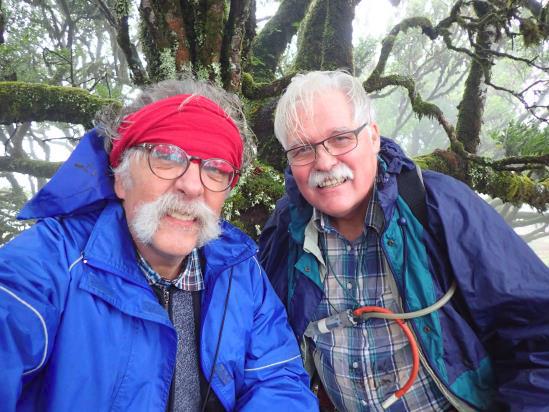Weevils of Cyprus - an image catalogue
by Peter E. Stüben1 & Rüdiger Jacob2

Suggested citation: Stüben, P.E. & Jacob, R. (2023…): Weevils of Cyprus - an image catalogue. - Le Charançon. Catalogues & Keys No. 6, Curculio-Institute, Mönchengladbach, Germany. ISSN 1864-0699.
Introduction
Cyprus is always worth an entomological trip and in fact this image catalogue started with the CURCULIO Institute’s 6th International Meeting in Droushia (Western Cyprus) from 17th-25th April 2010 (Fig. 1). The results of this one-week excursion quickly resulted in the publication of a new Cryptorhynchinae species, Echinodera cyprica Stüben, 2010, some week later in the Weevil News (print). It was followed by another article where participants recorded an impressive 163 out of the eventual total of ca. 330 Curculionoidea known from Cyprus as ultimately revealed in the SNUDEBILLER edition two years later. This publication usefully comprised of many high-resolution photos of habitus, biotopes and plant associations (Stüben et al. 2012). It also included information on the taxonomy, ecology and distribution of the species, which along with the first molecular barcodes (mtCO1), laid the contemporary foundation for species identification.
Our new richly illustrated catalog from the CURCULIO Institute is intended to clearly present the current knowledge of the Cypriot Curculionoidea. It contains detailed and diagnostic illustrations of the relevant identification characters including the aedeagi, but above all molecular barcodes. - Faunistic, largely complete grid mapping of species should not be the main focus for the time being, which from today's perspective cannot be achieved for any island or region of the Mediterranean due to the high biodiversity.
In order to achieve a complete mapping and recording of all species in their distribution area, a team would have to work permanently and for many decades on Cyprus. Today, more than ever, the possibilities of metabarcoding (e[nvironmental]DNA) speak against such a classical approach. Thousands of specimens can be simultaneously recorded down to species level in a mixed sample. The setting of malaise traps or the more random hand catches by taxonomists are only useful to validate much more comprehensive molecular monitoring; but of course also to have direct access to host plants and the developmental biology of species.
The entire island has a Mediterranean climate, thermophilic to subarid in the lower and middle altitudes, while the Troodos massif itself is very Mediterranean. In general, the vegetation is dormant in the dry summer season which can last up to 7 months. In winter there is never frost on the south coast which explains the many tropical trees in the gardens, obvious examples include the flame tree (Delonix regia (Bojer ex Hook.) Raf.) and various tropical flora such as taro, ocra or bananas. Winter temperatures decrease with altitude and snowfall regularly hits the Troodos massif. The most important vegetation forms visited during the first exploration of the CURCULIO Institute have previously been presented in detail (Stüben et al. 2012).
 Fig. 1. Some participants at the 6th International Meeting of the Curculio Institute in Cyprus in April 2010. From left to right at the back: Antonio Machado, Peter Sprick, Jo Brunner, Carlo Giusto, Lutz Behne, Peter Hlaváč, Gabriel Alziar; in foreground: Enzo Colonnelli, Christodoulos Makris. (Photo: P.E. Stüben).
Fig. 1. Some participants at the 6th International Meeting of the Curculio Institute in Cyprus in April 2010. From left to right at the back: Antonio Machado, Peter Sprick, Jo Brunner, Carlo Giusto, Lutz Behne, Peter Hlaváč, Gabriel Alziar; in foreground: Enzo Colonnelli, Christodoulos Makris. (Photo: P.E. Stüben).
This brings us to another important aspect of the Cyprus fauna – the geological history: 25 million years ago, due to the shifting of the African plate, the first mountain ranges appeared above the sea surface, the Troodos mountain range formed with Mount Olympus the highest peak at 1952m. Just 5 million years later, the Kyrenia Mountains followed as the 'second island' formed in the north of today's Turkish Republic of Northern Cyprus. We can draw comparison with the volcanic history of the Canary Islands in the Atlantic, where Fuerteventura and Lanzarote rose from the sea ca. 25 million years ago. However, their colonisation with plants, animals and above all insects from the Moroccan mainland took a completely different course further complicated by volcanic eruptions that have continued to this day to isolate biotas. Here, the biodiversity - similar to the Galapagos Islands - is many times higher than Cyprus (Stüben 2022) . Located in the eastern Mediterranean between 34° and 36° degrees north and 32° and 35° degrees east latitude on the Anatolian Plate (which belongs to Asia). Cyprus is only 68km from the coast of Turkey, 95km from the coast of Syria, 325km to the African coast of Egypt and 830km to the Euro-Greek mainland. This positioning results in the combined influence of several faunal and floral regions from Africa, the near-East and the Euro-Mediterranean. Cyprus is also exceptional for its 18.5% forest coverage making it the most densely wooded island in the entire Mediterranean region. Cyprus has exceptionally high biodiversity for the Mediterranean region as illustrated by its numerous landscapes and vegetation zones, which is, without doubt, facilitated by its presence at the intersection of these three biogeographical zones. For Curculionoidea, the 152 plant families containing 668 genera and more than 1800 species are certainly a great driver of speciation and there remains significant potential for the discovery of new species. Cyprus is - if you look at it that way - always worth an entomological trip!
Peter E. Stüben / Rüdiger Jacob
in spring 2023

Fig. 2. Peter Stüben (left) and Rüdiger Jacob (right)
Authors / Contacts
1Dr. Peter E. Stüben, Curculio Institute, Hauweg 62, 41066 Mönchengladbach, Germany.E-Mail: p.stueben@t-online.de
2Rüdiger Jacob, Ermin-Hohlwegler-Str. 26, 78234 Engen, Germany.
E-Mail: ruediger.jakob@gmx.de
(Peter Stüben and Rüdiger Jacob are members of the CURCULIO Institute)
References
Stüben, P.E. (2010): Echinodera (Ruteria) cyprica sp.n. (Coleoptera: Curculionidae: Cryptorhynchinae). - Weevil News and Weevil News print 52 (1. July 2010): 2 pp., CURCULIO-Institute: Germany/Mönchengladbach
web: https://www.curci.de/?beitrag=161
Stüben, P.E., Sprick, P., Behne, L., Alziar, G., Colonnelli, E., Giusto, C., Messutat, J. & Teodor, L.A. (2012): The Curculionoidea (Coleoptera) of Cyprus. Results of a collecting journey on Cyprus by members of the CURCULIO Institute in April 2010. - SNUDEBILLER: Studies on taxonomy, biology and ecology of Curculionoidea 13, No. 195: 80-137, CURCULIO-Institute: Mönchengladbach
web: https://www.curci.de/?beitrag=195
Stüben, P.E. (2022): Weevils of Macaronesia. - Canary Islands, Madeira, Azores (Coleoptera: Curculionoidea). 1st ed., Curculio Institute, Mönchengladbach, 784 pp.
web: Researchgate.net

